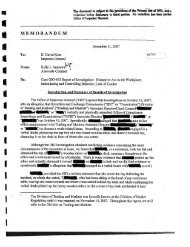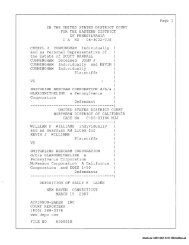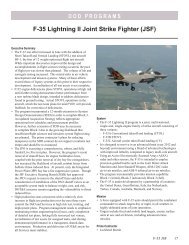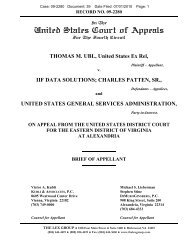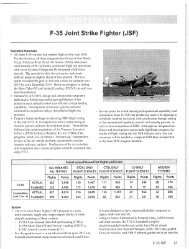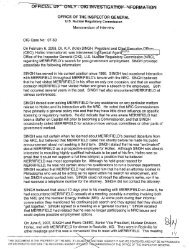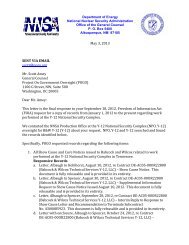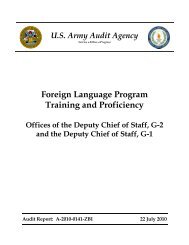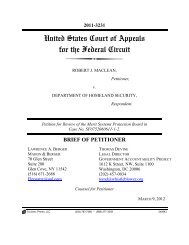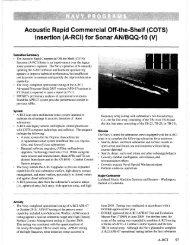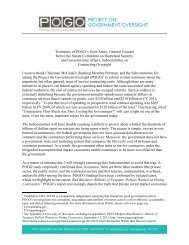The Pentagon Labyrinth
The Pentagon Labyrinth
The Pentagon Labyrinth
You also want an ePaper? Increase the reach of your titles
YUMPU automatically turns print PDFs into web optimized ePapers that Google loves.
110 | Evaluating Weapons: Sorting the Good from the Bad<br />
R&D tests, though perhaps useful to designers and engineers, are inherently<br />
useless for judging a weapon’s effectiveness because they suffer from an<br />
insurmountable conflict of interest: they are controlled by the weapon’s<br />
development agency. Developer agencies always have a powerful vested interest<br />
in proving that their creation is a success and more effective than any<br />
alternatives. In theory, operational or field tests, that is, those run not by<br />
developers but by military end-users, are free of this conflict. In reality, the<br />
“keep the money flowing” pressures of contemporary military senior leadership<br />
make rigorous, honest and useful user tests impossible. A 1981 briefing catalogs<br />
the most common and still ongoing abuses in operational testing. 21 In the<br />
nearly three decades since, the list of OT&E abuses has hardly changed, though<br />
the bias in test outcomes has become far more egregious. <strong>The</strong> single most<br />
crippling new abuse is the now-common practice of having contractors (or their<br />
subsidiaries) “participate” in the writing of operational test reports evaluating<br />
their own product.<br />
A dramatic example of the gulf between the rosy optimism of R&D testing and<br />
the brutal reality of combat is the AIM-7 Sparrow air-to-air radar missile, the<br />
mainstay of the technologists’ hopes of beyond-visual-range combat for at least<br />
40 years. <strong>The</strong> Sparrow’s initial R&D tests reported 80 percent to 90 percent kill<br />
rates. Of course, nearly 100 percent of these tests were against non-maneuvering<br />
drone targets, many of them with artificially strengthened radar returns.<br />
Operational tests claimed 50 percent to 60 percent kill rates, shooting at mostly<br />
non-maneuvering targets with a token light maneuver thrown in now and then.<br />
Combat reality raised its ugly head in the skies over North Vietnam. Successive<br />
“improved” Sparrow models from the AIM-7B to the AIM-7F never got above<br />
the 8 percent to 10 percent hit rate. Lots of angry F-4 fighter pilots came home<br />
cursing about getting a perfect tail position on a MiG, firing all four Sparrows<br />
on board, and watching all four miss. And, bitterest pill of all, they had no<br />
cannon onboard the F-4B/C/Ds to use after the missiles missed. Ironically, the<br />
Sparrow’s highly touted 90 percent R&D kill rate was the aircraft bureaucracy’s<br />
prime excuse for omitting the gun.<br />
Combat proved the AIM-7 to be worse than useless: the drag and weight<br />
penalties of carrying four large missiles and of the expanded fuselage needed to<br />
hold the large, heavy radar and its bulbous radome sorely degraded the<br />
dogfighting performance of the F-4 as well as that of the later F-14, F-15 and<br />
F-18.<br />
21 Pierre M. Sprey, “Today’s OT&E: Abuses and Remedies,” Informal Briefing by Pierre<br />
M. Sprey for Congressional Military Reform Caucus, 1981. Find a copy of this document<br />
at http://pogoarchives.org/labyrinth/09/12.pdf.



